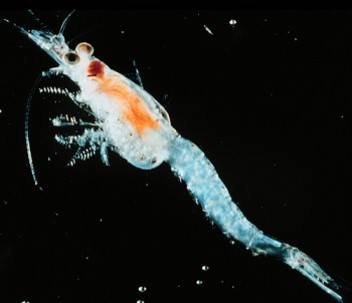Great Lakes Mysis Monitoring
On this page:
What are Mysis?
Mysis are a type of crustacean, similar to shrimp, that feed on zooplankton and phytoplankton. Mysis are sensitive to light and temperature, staying in deeper waters during daylight to avoid being eaten and migrating up at night in the water column to feed. Mysis diluviana are the species found in the Great Lakes.

Why does GLNPO monitor Mysis?
Mysis are an important part of the Great Lakes food web. They eat phytoplankton and zooplankton, and Mysis serve as a food source for Great Lakes fish. Mysis also compete with fish for their zooplankton and phytoplankton food source.
How does GLNPO sample and analyze Mysis?
Aboard the R/V Lake Guardian, Mysis are collected at night by a full depth net tow using a mysid net. During the net tow, lights are turned off to maintain the dark environment and avoid disturbing the Mysis while scientists use red lights to conduct the sampling. Once collected, the Mysis sample is used to evaluate population size, organism size, and reproductive status of the Mysis in each lake.

